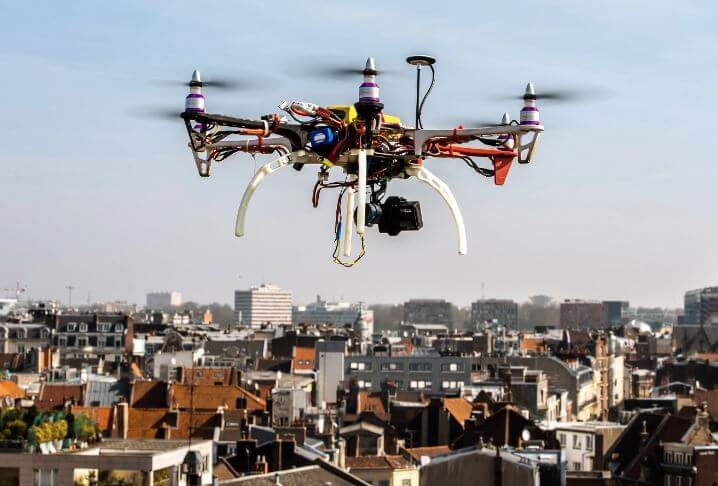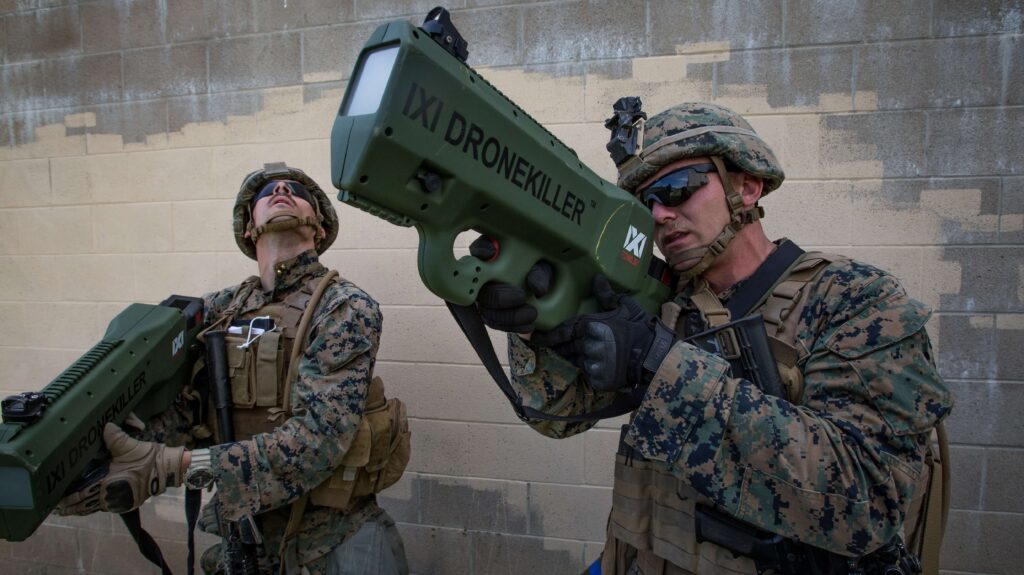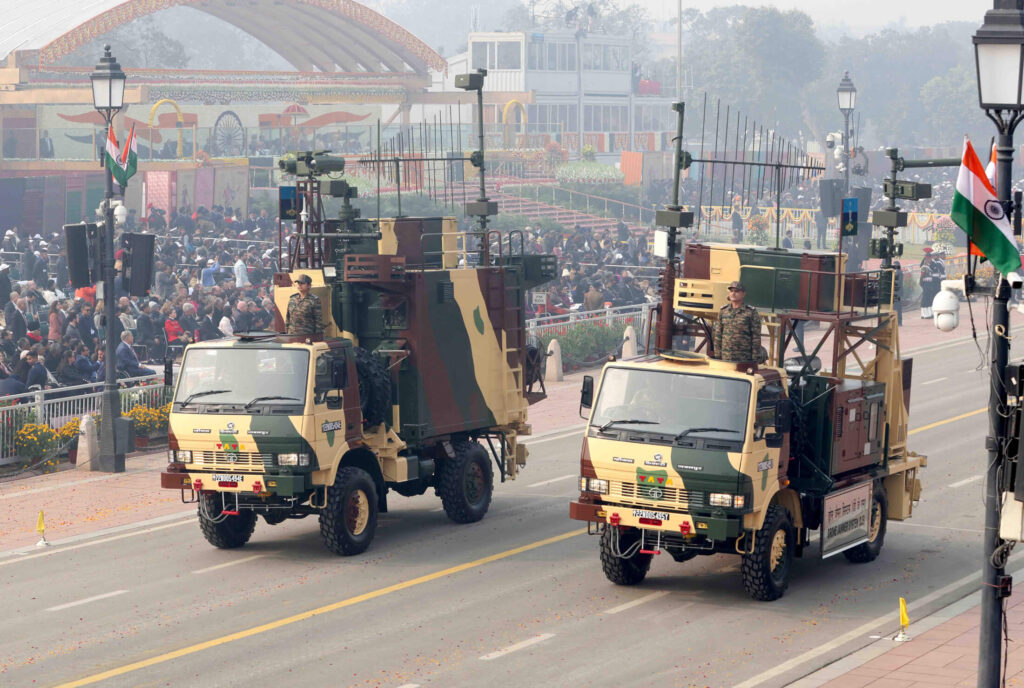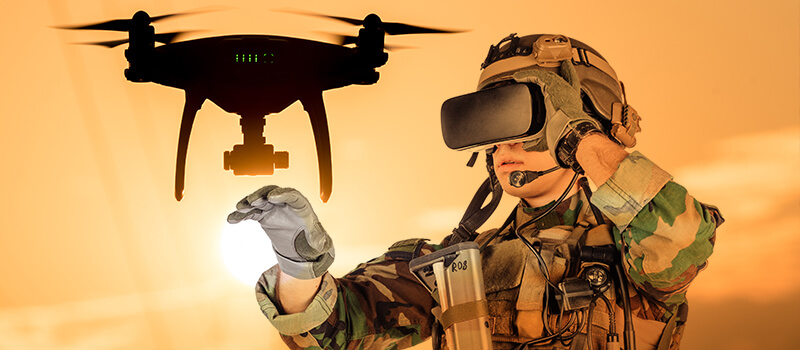
The advent of Unmanned Aircraft Systems (UAS), commonly referred to as drones, has revolutionised many sectors in terms of versatility and efficiency. However, this technological advancement presents a substantial security concern in the urban environment. Drones, owing to their size, manoeuvrability, and ease of operation, have become a tool for nefarious activities, ranging from espionage to direct attacks on infrastructure and individuals. Thus, countering drones has emerged as a critical component of urban security strategy. Cities are particularly vulnerable because of their dense populations and presence of critical infrastructure.
Challenges in urban environments include the following:
- Detecting drones amidst the complex backdrop of cityscapes, as they can easily blend with the environment or be mistaken for benign entities.
- Risk of collateral damage in dense areas when employing kinetic countermeasures.
- Legal and ethical implications related to privacy and civil liberties when deploying surveillance and interception technologies.
To address these issues, innovative solutions that can differentiate between authorised and unauthorised drone activities, while minimising potential harm to civilians, are imperative. However, these solutions must operate within the constraints of legal frameworks that protect individual rights, without compromising public safety.

The Growing Threat of Drones in Urban Environments– From the perspective of technological advancements, drone technologies have taken a quantum leap, encompassing an array of constructive and destructive applications. Drones now serve as devices for conducting attacks in urban settings, as tools for aerial photography & videography and as means to create panic among the population. Unconventional actors, including terrorist groups, have adapted this technology to their tactical advantages, sharply escalating the level of threat posed to urban environments.
Role of Drones in Facilitating Asymmetric Warfare– This form of combat creates an imbalance of power where terrorists and non-state actors can execute attacks without direct confrontations. Leveraging drone technology allows such actors to evade conventional defence systems, thereby posing a significant challenge in maintaining security in urban areas.
Potential Risks Posed by Misuse of Drones– The potential risks engendered by drone misuse extend beyond immediate physical harm. Critical infrastructure, such as power grids, water supply systems, and transportation networks, can be directly targeted by hostile elements, causing widespread disruption. Equally concerning is the compromise between public safety and privacy. Drones equipped with surveillance devices can violate privacy rights on an unprecedented scale and pose safety hazards because of their unpredictable flight paths.
The integration of anti-drone weapons into urban defence systems is essential for countering the unauthorised use of drones. These technologies are diverse and can be broadly categorised based on their detection and neutralisation capabilities.
Detection Technologies

Electro-Optical/Infrared (EO/IR) Systems– EO/IR systems leverage the power of high-resolution cameras, along with thermal imaging, to detect the presence of drones. These systems are particularly effective in urban environments, where visual line-of-sight may be obstructed by buildings. By capturing thermal signatures, EO/IR sensors can identify drones that would otherwise be invisible to the naked eye, especially during night operations or in low-visibility conditions. Advanced EO/IR systems are integrated with other technologies, such as radar and acoustic sensors, to create a comprehensive surveillance network against drone intrusions.
Neutralization Technologies

Radio Frequency (RF) Jammers– RF jammers disrupt the communication channels between the drone and its controller. They emit signals that overpower or block the frequency bands used by the drones. In urban areas, RF jamming can be fine-tuned to avoid interference with other essential communication systems, thereby isolating the rogue drone without affecting the surrounding infrastructure. RF jammers are deployed in both portable formats for ground personnel and as part of larger fixed installations that protect sensitive sites.
GPS Spoofers– GPS spoofing involves sending false GPS signals to a drone and tricking its navigation system into believing it is elsewhere. This method can effectively divert a drone from its intended course without causing physical destruction. By redirecting unauthorised drones away from sensitive locations, GPS spoofers offer a pre-emptive defence measure that minimises potential damage and reduces risk. This technology can be particularly useful during high-profile events or in proximity to critical infrastructure, where an intrusion could have severe consequences.
These anti-drone weapons form the crux of urban defence strategies by providing both early detection and direct countermeasures against potential threats. They underscore the importance of initiating surveillance and interdiction capabilities within densely populated cities. As threats evolve, these defensive technologies must be adapted to maintain security and operational superiority within urban landscapes.
Non-Lethal Techniques for Countering Drones

The imperative to safeguard the urban population from the threats posed by unauthorised drones necessitates the adoption of non-lethal countermeasures. These non-lethal solutions play a crucial role in ensuring public safety and minimising the risk of harm to innocent bystanders.
Net Guns and Skyhooks– The use of physical netting devices, such as net guns, offers a tactical approach to safely neutralise unmanned aerial threats. Net guns project a net that can entangle the rotors of a drone, thereby immobilising it and preventing further intrusion. These devices can be handheld or mounted on vehicles, providing flexibility in various urban scenarios. The principal advantage lies in their immediacy and reliability, with minimal risk to surrounding infrastructure. Operators can swiftly aim and discharge nets over considerable distances, making them effective, even in dense urban landscapes.
Parallel to net guns are skyhook systems, which consist of larger nets that are often deployed by another drone. This method allows for the controlled capture of a rogue drone. Skyhook-equipped drones can be manoeuvred accurately to intercept and capture unauthorised drones. Post-capture, the system enables the secure transportation of the disabled drone to a designated location for examination or disposal.
Also Read: Will drones & UAVs change the future battlefield?

Drone Swarms– Drone swarm technology heralds a new paradigm in counter drone operations. By leveraging coordination among multiple drones, defensive swarms can effectively engage and neutralise hostile drones. Using advanced algorithms, drone swarms synchronise movements to encircle or chase down target drones. Through combined efforts, these swarms can disrupt the flight path of an intruding drone or physically impede its ability to continue its mission. Swarms can adapt to the behaviour of a target, making them suitable for various scenarios without causing damage to the environment. This innovative use of friendly drones to combat rogue drones underscores a strategic shift towards using technological sophistication rather than brute-force. This exemplifies how advancements in robotics and AI contribute significantly to maintaining safety within urban arenas.
Employing these nonlethal countermeasures ensures that law enforcement and security agencies have effective tools at their disposal that are congruent with ethical standards and public safety concerns. Each technique offers unique capabilities that contribute to a comprehensive urban defence strategy against unauthorised drones.
Role of Technology In Urban Drone Defence

In the face of a persistent and growing threat, it is important to use modern technologies to secure urban airspace. Artificial Intelligence (AI), Machine Learning (ML), and Big Data Analytics are important for developing strategies to defend against drones. Artificial Intelligence can be used to automatically detect and respond to unauthorised drones without requiring humans to do everything. AI algorithms can look at data from different sensors immediately and determine whether there is a hostile drone based on its size, shape, flight pattern, and behaviour. This AI application helps to reduce false alarms and makes it easier to find drones when they are present. Machine Learning is also important for improving drone defence. ML models can learn from past encounters with rogue drones and become better at predicting and stopping them over time. For example, they may find patterns in how unauthorised drones enter urban airspaces and produce better ways to stop them.
Big-data analytics is another key part of dealing with drone threats. Cities have a large amount of data from traffic cameras, radar systems, social media feeds, and more. Analysing all this data can help in determining if there might be a drone intrusion and initiate action proactively.
However, simply having these fancy technologies is not enough by itself. There is a need to integrate and synergise them in a way that makes them effective in countering hostile drones in cities. As an illustration, AI could look at data from radar and cameras simultaneously, one could ascertain whether there is a drone and what it is doing. ML algorithms could predict where a drone might be going based on its current path and how it has flown before. Jammers or other tools could be used prevent the drone from its planned objective.
Addressing the Legal, Ethical, and Practical Considerations

Several legal, ethical, and practical considerations are vital for adequate urban drone defence strategies. One such aspect is the need for a clear legal framework to govern the employment of anti-drone technologies in urban settings. This framework must strike a balance between the urgency of security needs and the preservation of privacy rights and civil liberty.
The utilisation of Anti-Drone Systems in populated areas raises questions regarding privacy invasion and property rights infringement. Therefore, it is imperative to establish laws that delineate the boundaries of lawful anti-drone operations. For instance, regulations could specify how data collected during drone-monitoring activities should be managed to prevent misuse. Moreover, clear legislation can help legally classify diverse types of drone incursions and determine the appropriate responses.
The deployment of autonomous anti-drone systems ushers in additional ethical dimensions into the discourse. As these systems operate with minimal human intervention, concerns about accountability can cause unintended harm or damage. Pre-empting this, guidelines on ethical deployment are necessary. These might stipulate the system transparency requirements or mandate human-in-the-loop control mechanisms. By doing so, they would ensure that the autonomous anti-drone measures remain accountable while minimising unintended consequences.
The implementation of counter-drone strategies in large urban spaces presents practical challenges. The complexity of cityscapes with high-rise buildings and dense populations makes it difficult for anti-drone solutions to function effectively. These factors impede both detection capabilities owing to line-of-sight obstructions and response efficacy owing to the potential risks posed to bystanders.
As drone threats in urban environments continue to evolve, the urgency to stay ahead is paramount. Continuous innovation and collaboration are the linchpins to this endeavour. Government agencies, law enforcement, industry stakeholders, and the public must engage in concerted efforts to develop and implement effective anti-drone strategies.

